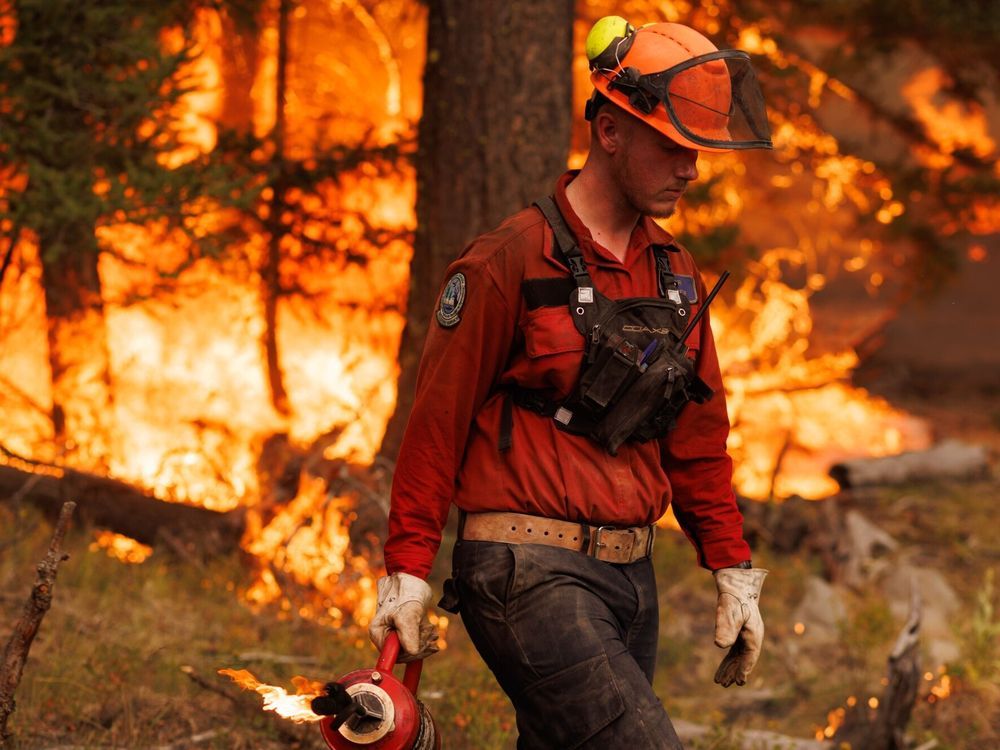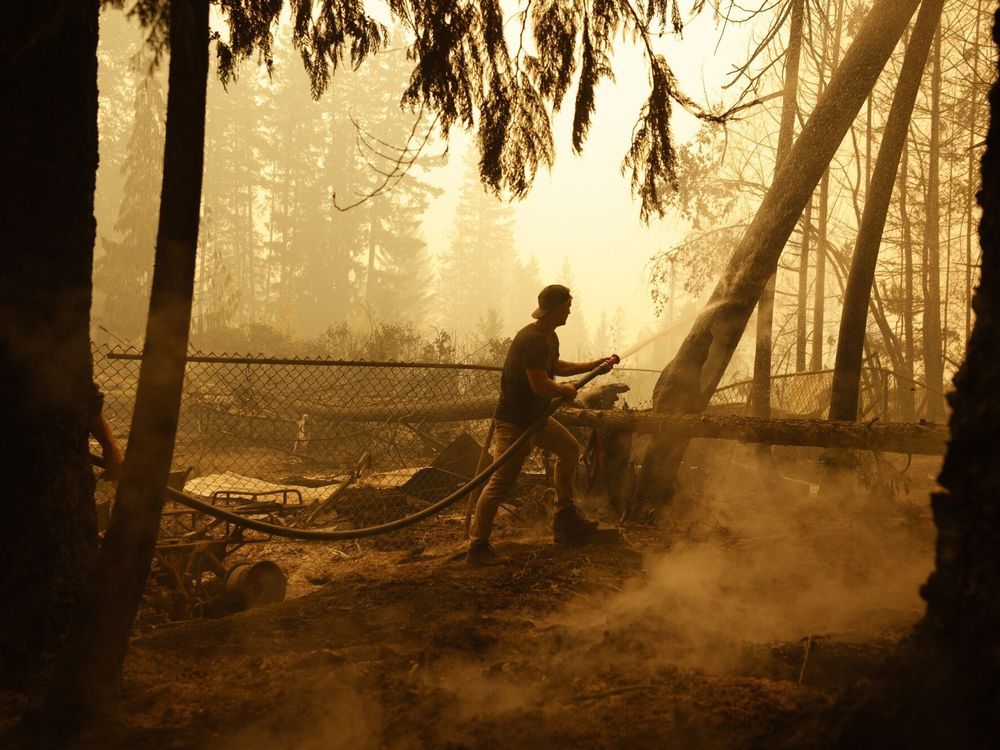While skiers enjoy the slopes of Whistler Mountain and ice fishers fish in frozen lakes in Alberta, some of the fires that covered North America’s skies last year are still burning, including some smouldering under layers of snow.
These so-called “zombie fires” indicate a grim new normal causing havoc even in northern countries like Canada: A fire season that almost never ends.
B.C. had 90 zombie blazes still burning as of mid-March, left over from last year’s record fire season, while Alberta started the year with 64 fires carried over from 2023 — more than 10 times the five-year average. As spring temperatures melt snow and uncover land parched by drought, those fires and new ones are poised to flare up, posing a fresh threat to Canada’s forests, not to mention the world’s atmosphere.
“We really don’t get out of wildfire season like we have historically,” said Rob de Pruis, director of consumer and industry relations at the Insurance Bureau of Canada. “They’re a real and present danger, and wildfires are happening right now.”
The worst fire season on record in Canada made global headlines last year when smoke from the blazes blotted out the skies above New York and other U.S. cities, spawned a rare pyro-tornado and forced the evacuations of an estimated 232,000 people. The fires burned an area that was more than seven times the historic average — or about 4 per cent of the country’s forests, according to a new study.
The flames caused more than $1 billion in insured damages, according to the insurance bureau. They also may have released emissions that are more than twice the annual carbon output of the nation’s economy, a top government scientist has estimated.
This year, with 71 per cent of Canada abnormally dry or in drought in February and swaths of the country as much as 5 degrees warmer than normal, governments and companies are bracing for a repeat. Alberta declared a start to its wildfire season on Feb. 20 — the earliest in recent years — and a spokesman for Quebec’s forest-protection agency said the province’s season is poised to start as much as four weeks earlier than usual.

A member of the B.C. Wildfire Service Fraser Unit Crew uses a drip torch to set a planned ignition as part of wildfire-fighting efforts last July.
Nationally, the federal government has invested $170 million in a satellite mission to monitor fires, while the armed forces are training more soldiers as support firefighters.
The B.C. government created a permanent Ministry of Emergency Management and Climate Readiness in 2022 — the year after the town of Lytton burned to the ground in a record-breaking heat wave — to deal with the onslaught of fires and floods. That replaces the previous approach, where resources were mobilized temporarily in response to events.
“I exist in a state of anxiety on behalf of the province,” the department’s minister, Bowinn Ma, said in a phone interview. “It has become apparent that kind of response-focused model just wasn’t sufficient.”
The province is improving firefighting gear, working to increase access to aircraft, testing night-vision tech to fight fires at night, and exploring how to use AI to predict fires.
The province’s wildfire service is changing to operate year-round instead of seasonally and has boosted its full-time staff by over 50% since 2022. B.C. plans to almost triple the number of planned prescribed and cultural forest burns to prevent and control wildfires this year: 61 are planned.
The changing weather patterns are also affecting businesses. Telus has increased clearing brush around its cell towers in fire-risk areas to prevent communities from getting cut off, according to Phil Moore, vice president of real estate and business continuity.
The wireless provider has invested over C$100 million in protecting infrastructure over the past five years and is helping fund a German startup called Dryad Networks GmbH, which uses sensors to detect wildfires earlier.
The Canadian oil and gas sector has been greatly impacted by fires in the past decade. In 2016, a devastating blaze forced the sector to shut down over one million barrels of daily output, causing about $3.7 billion in insured losses.
During last year’s fire season, energy producers such as Chevron Corp., Canadian Natural Resources Ltd., and Baytex Energy Corp. sometimes halted production equivalent to about 300,000 barrels of oil a day as fires approached wells and processing infrastructure.
The drought conditions that lead to fires can also harm producers by cutting off the water they need for operating oilsands mines and wells.
The Alberta Energy Regulator cautioned energy companies in December to plan for low water supplies as average monthly precipitation from October to February was the lowest in at least 10 years in five of Alberta’s production areas.

The Statue of Liberty was covered in smoke from Canadian wildfires last June.
Investors are concerned about the issue. Analysts questioned executives from Suncor Energy Inc., Imperial Oil Ltd., and Canadian Natural about their preparations for drought conditions during recent earnings calls.
There’s one positive aspect: the fires in 2023 burned large forest areas in a way that smaller fires may not be able to merge and create massive continuous blazes, said Thomas Smith, an associate professor of environmental geography at the London School of Economics.
“The connectivity is certainly going to slow down and stop the spread of some of these fires,” Smith said. “But I don’t expect it to be a very quiet fire year.”
— With help from Danielle Bochove and Mathieu Dion



